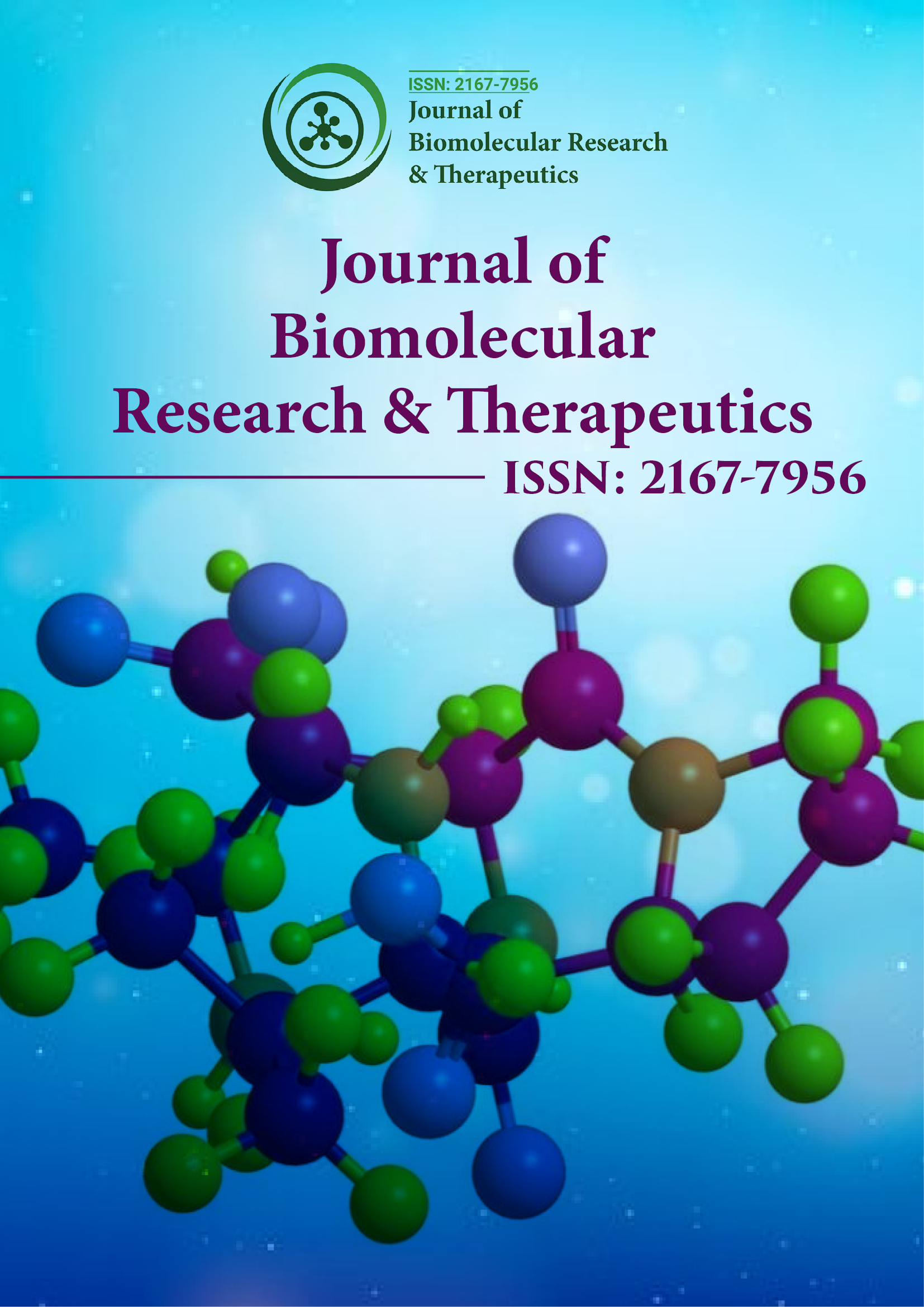Indexed In
- Open J Gate
- Genamics JournalSeek
- ResearchBible
- Electronic Journals Library
- RefSeek
- Hamdard University
- EBSCO A-Z
- OCLC- WorldCat
- SWB online catalog
- Virtual Library of Biology (vifabio)
- Publons
- Euro Pub
- Google Scholar
Useful Links
Share This Page
Journal Flyer

Open Access Journals
- Agri and Aquaculture
- Biochemistry
- Bioinformatics & Systems Biology
- Business & Management
- Chemistry
- Clinical Sciences
- Engineering
- Food & Nutrition
- General Science
- Genetics & Molecular Biology
- Immunology & Microbiology
- Medical Sciences
- Neuroscience & Psychology
- Nursing & Health Care
- Pharmaceutical Sciences
Perspective - (2024) Volume 13, Issue 5
Techniques and Reasoning: A Dual Approach to Biomolecular Structure Analysis
Martin Agnes*Received: 30-Sep-2024, Manuscript No. BOM-24-27791; Editor assigned: 02-Oct-2024, Pre QC No. BOM-24-27791 (PQ); Reviewed: 16-Oct-2024, QC No. BOM-24-27791; Revised: 23-Oct-2024, Manuscript No. BOM-24-27791 (R); Published: 30-Oct-2024, DOI: 10.35248/2167-7956.24.13.409
Description
Epistemic expression plays a pivotal role in the determination of biomolecular structures, shedding light on the complex details of biological molecules and their functions. These structures, encompassing proteins, nucleic acids and complex assemblies, are fundamental to cellular processes and therapeutic innovations. The evolution of this field reflects the convergence of experimental methods, computational tools and epistemic reasoning. The process involves not only data acquisition but also the interpretation and construction of accurate molecular models, making it a profoundly intellectual endeavor.
Epistemic expression refers to how knowledge is articulated, reasoned and validated within scientific inquiry. In biomolecular structure determination, it involves interpreting experimental findings, developing computational models and assessing the reliability of conclusions. Methods such as X-ray crystallography, Nuclear Magnetic Resonance (NMR) spectroscopy, cryo-Electron Microscopy (cryo-EM) and computational approaches provide unique insights. However, integrating these techniques demands a clear understanding of their respective strengths, limitations and uncertainties, underscoring the importance of epistemic reasoning.
X-ray crystallography has been instrumental in delivering atomic resolution images of countless biomolecular structures. This process involves crystallizing molecules, diffracting X-rays through the crystal lattice and reconstructing the resulting electron density map. Despite its precision, the technique is constrained by certain assumptions. For instance, interpreting electron density maps necessitates model building, which can introduce subjectivity. Additionally, the method’s reliance on high-quality crystals and specific environmental conditions restricts its use for some biomolecules. A central epistemic challenge is determining how accurately these structures represent the molecule's native state.
NMR spectroscopy complements X-ray crystallography by studying biomolecules in their natural environments. This method provides insights into molecular conformations, dynamics and interactions by analyzing magnetic interactions between nuclei. However, NMR is constrained by the size of the molecules it can study and often generates noisy data. The resulting structural models are usually ensembles of possible conformations rather than definitive structures. This raises epistemic questions about the biological relevance of these conformations and how they should be interpreted in functional studies.
Cryo-EM has emerged as a innovative technique in structural biology, enabling visualization of large macromolecular complexes at near-atomic resolution without requiring crystallization. Advances in detector technology and image processing algorithms have significantly enhanced cryo-EM’s applicability and resolution. However, interpreting cryo-EM density maps, particularly for flexible molecular regions, poses challenges. Epistemic reasoning becomes essential in assessing the confidence placed in these models and integrating cryo-EM data with other methods to provide a more comprehensive understanding.
Computational tools, especially Molecular Dynamics (MD) simulations and artificial intelligence-driven methods like AlphaFold, have gained traction in recent years. MD simulations explore the dynamic behavior of biomolecules, revealing conformational changes and interactions over time. However, the reliability of these simulations depends on the accuracy of the force fields and assumptions in the computational model. AlphaFold has made remarkable strides by predicting protein structures from amino acid sequences with impressive accuracy. Yet, its limitations in handling unusual folding patterns or non standard residues highlight the need for ongoing epistemic scrutiny. These computational models’ reliability must be constantly evaluated against experimental evidence and understood within their boundaries of applicability.
Modern structural biology increasingly relies on integrating multiple methods. Hybrid approaches, such as combining cryo- EM with NMR data or computational models with experimental techniques, address the limitations of individual methods. For example, cryo-EM may provide a low-resolution map of a macromolecular assembly, while NMR or crystallography can deliver atomic-level details for specific regions. This integration requires nuanced epistemic judgment to balance the contributions of each method and resolve discrepancies.
In conclusion, biomolecular structure determination is as much about epistemic reasoning as it is about technical prowess. Techniques like X-ray crystallography, NMR spectroscopy, cryo-EM and computational modeling have transformed our ability to visualize and understand biological molecules. However, interpreting structural data requires rigorous reasoning, recognition of uncertainties and integration of diverse perspectives. By fostering a culture that emphasizes critical evaluation, transparency and interdisciplinary collaboration, structural biology will continue to advance, deepening our understanding of the molecular mechanisms underpinning life.
Citation: Agnes M (2024). Techniques and Reasoning: A Dual Approach to Biomolecular Structure Analysis. J Biomol Res Ther. 13:409.
Copyright: © 2024 Agnes M. This is an open-access article distributed under the terms of the Creative Commons Attribution License, which permits unrestricted use, distribution, and reproduction in any medium, provided the original author and source are credited.

